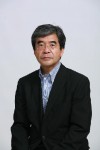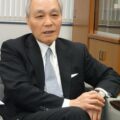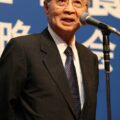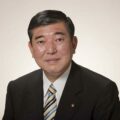(RIGHT TILT?) Does Shinzo Abe’s Election Really Herald a More Militarist Japan?

Aida Hiro
Is Japan drifting to the right? The ongoing dispute between China and Japan over the Senkaku Islands in the East China Sea (known in China as the Diaoyu Islands) has triggered a debate about the trajectory of Japanese politics, and the return to power of the old guard Liberal Democratic Party (LDP) has further enlivened it. Moreover, as LDP’s comeback kid, Prime Minister Shinzo Abe is such a self-assertive figure that the argument has become inflamed. The Japanese and international media have already concluded the matter, coalescing around the idea that Japan is presently undergoing a shift to the right. But the truth is not so simple, and this consensus conclusion is neither accurate nor useful.
First, it is very hard to define what “shifting to the right” means. Suppose for the sake of discussion that being rightist means being militaristic. Would the snail’s pace of Japan’s movement from a totally defensive military posture to a new bearing with very limited offensive capabilities be worth calling a rightward shift, when compared with China’s rapid and massive military expansion? If moving right means having certain revisionist historical views, Japan’s re-elected Prime Minister Abe must surely be a rightist. But despite such views, which Abe expressed before and during the election campaign late last year, he has so far refrained from revisiting the Yasukuni Shrine dedicated to Japan’s war dead. Nor has he done anything else that would indicate a rightward shift in defense or foreign policy. So it is not clear what “moving to the right” means in either relative or practical terms.
Second, it is perhaps trite but nonetheless true that the way a picture looks depends on where the viewer is standing. The Philippine Foreign Minister, for instance, recently welcomed a rearmed Japan shorn of its pacifist constitution–a statement made against the backdrop of criticism, mainly by China and both Koreas, of Japan’s supposed shift to the right. Apparently, from this Foreign Minister’s vantage, Japanese rearmament would not be threatening but beneficial. For the Philippines it is not Japan but China that is threatening as an expansionist power. So if rightist means expansionist, Japan is not rightist at all, as seen from Manila–or, for that matter, from other Southeast Asian capitals.
But looking east from Beijing, the Chinese, at least those sitting atop official perches, view Japan as newly militaristic and expansionist, and hence rightist. Of course, almost by definition a Communist Party state cannot view itself as right-wing, even though China is by regional consensus far more militaristic and expansionist than Japan. It is futile to point this out to Chinese officials, since threat levels rest in the eye of the beholder.
Third, the Japanese people’s own awareness of domestic politics cannot be ignored. Do most or even many Japanese think their government or their society as a whole is moving to the right, whatever that means? Yes, they do, while the majority of the Japanese people still say they want to keep the pacifist constitution as it is. That view is of course influenced by media reports, newspaper editorials, comments from intellectuals and views expressed in debate and discussion programs on television and radio, but all that shows is that Japan’s opinion elite is not newly “rightist” either, despite what some media reports say.
Fourth, understanding Japan’s media subculture is crucial here. In a recent roundtable discussion in which I took part, a Chinese scholar based his own assessment of Japan’s rightist trajectory on various reports and opinions he had seen in the Japanese media, and he said the Chinese media, who help form the Chinese people’s view, do the same. He (and the Chinese media) seemed not to comprehend how a free media operates in a competitive commercial environment. Japanese media pick and choose materials to print and broadcast to attract an audience. They thus try to influence the powers that be and gain attention abroad, all to that same end. Interestingly, many Chinese observers fail to discern bias in Japanese news reporting as opposed to editorial expressions, despite the fact that bias smuggled into supposedly factual accounts is how Chinese media work day in and day out.
The Chinese, who utilize the Japanese media to support their views, also seem not to recognize that Japanese media play the same game in reverse, citing Chinese media to buttress their own views. There is a complex cross-border interaction going on here, but the Chinese seem to take Japanese reports at face value. Finally on this point, the Japanese mainstream media have yet to outgrow their Cold War-era leftist bias. As the LDP’s one-party rule rolled on for half a century, the mainstream media, which considered criticizing the government to be their main role, often relied on the Socialist/Communist line as a reference point. This long-standing habit continues to shape the media’s political commentary, leading them to see as “rightist” what only looks rightist from their generally left-wing perspective.
The fish-eye lens of media bias operates outside of Japan, too. Reacting to the results of Japan’s general elections in December, the Guardian blared, “Japanese hawk’s election victory prompts fear of regional tension.” The article itself hangs its argument for Abe’s and the LDP’s supposed rightist tilt on a quote from a commentary in Xinhua, likely the Communist Party’s official line:
An economically weak and politically angry Japan will not only hurt the country but the region and the world at large. . .Japan, which brought great harm and devastation to others in the Second World War, will raise further suspicions among its neighbors if the current political trend to turning right is not stopped in time.
The Guardian’s other arguments regarding the supposed rightist trend in Japan are nakedly hypothetical. For example, the article says China’s “furious” reaction is expected “if” the LDP, led by Abe, goes ahead with campaign pledges to develop fisheries and build on the Senkakus. Analysts’ views quoted in the article were divided. Some predicted that Abe would rather take a more pragmatic and conciliatory approach toward Beijing, as he did when he was Prime Minister six years ago.
Notwithstanding the generally leftist tilt of the Japanese media, the dominant view on the LDP’s landslide victory in December is that it was not an expression of a deep popular desire to shift rightward or to take a sterner posture toward Beijing or Seoul. It was rather a decisive rejection of the Democrats’ government, which could not resuscitate the economy, and which mismanaged the reconstruction of the regions affected by the massive earthquake and tsunami in 2011, with the Fukushima nuclear disaster playing a particularly large role. The ruling party was also punished for screwing up the U.S.-Japan alliance.
Prime Minister Abe knows all this very well. He said in his first post-election press conference that his party’s victory was not a restoration of confidence in the LDP but rather a rejection of the Democrats’ incompetent rule. His priorities, for the time being, are focused entirely on the country’s economic recovery.
Abe, for example, has not pushed ahead on his campaign promise to station civil servants on the Senkakus. He has also postponed hosting a ceremony originally scheduled for February 22 to commemorate the 1905 incorporation of the Takeshima Islands in the Sea of Japan, which are controlled and called the Dokto Islands by the Republic of Korea. The territorial dispute over these islands was re-inflamed last summer by the first-ever visit there by a South Korean President. In lieu of hosting the ceremony, Abe sent a special envoy to Seoul and had the leader of the LDP’s coalition partner, the New Komeito party, visit Beijing, both within a month of the new cabinet’s being formed. Abe’s conciliatory and pragmatic approach is apparent, and the steps he has taken are in line with what experienced analysts had expected. There is nothing “rightist” about it.
Yet still the Japanese media report (and the foreign media echo) a rightist tilt in Abe’s new government, citing issues other than his policy on territorial disputes. What are those issues? Let’s call some of them “normalization” issues and others “historical” issues (even though they’re really linked, not separate, issues).
The first normalization issue is amending the current constitution. Abe isn’t the only one who claims that the constitution was imposed by the Americans during the postwar occupation; this is the common understanding of the Japanese people as well. The most controversial of the possible amendments would change Article Nine, known as the “pacifist clause”, renouncing a military for anything but defensive purposes. By amending Article Nine, Abe is also suggesting changing the name of the Japanese military,Jieitai, translated as “Self-Defense Forces”, to Kokubogun, which translates literally as “National Defense Forces.”
There is ongoing debate over whether this change would be a step in the direction of a “normal military” (Asahi Shimbun editorial, December 1, 2012) or a “military on the same footing as other countries” (Mainichi Shimbun editorial, November 27, 2012). The premise of this argument is that a Japan with a “normal military” could threaten the security of East Asia.
However, there are many more in East Asia besides the Philippine Foreign Minister who would welcome Japan’s becoming a “normal country.” As a November 26 New York Times article put it, “Jitters over China’s ambitions appear to be softening bitterness toward Japan among some Southeast Asian countries trampled last century in its quest for colonial domination.” But this is about more than just softening bitterness; some even expect Japan to become stronger. The prominent Australian strategist Peter Jennings claimed that it is in his country’s interest to prod Japan to be a more normal country so as to contribute more to Asia’s security.
A Singaporean diplomat, too, recently told me that his country worries that a weaker Japan would not be able to check an expansionist China. Singapore, he added, expects a “more normal” Japan. The Straits Times, Singapore’s major newspaper, printed well-reasoned analyses about the political situation in Japan after the general election in December. One, titled “Dovish Influence Will Rein in the Hawk in Abe” and written by a retired French diplomat who served in Japan, the United States, China and Singapore, said that despite tough campaign talk on diplomacy and defense Abe has mostly refrained from direct attacks on China and the Koreas. Hawkish or not, Abe cannot ignore the wishes of its coalition partner, the New Komeito party, which firmly opposes nationalistic causes such as amendment of the “peace clause” of the constitution. Nor can Abe ignore “the powerful business community, which badly needs a stable and friendly relationship with China, whose huge market is indispensable to the survival of Japanese economy.”
On top of such domestic constraints, Japanese voters are still very pacifist according to recent polls. Although a majority of voters now favor revising the Constitution, they do not want to change Article Nine, but rather other portions, to do things like add new rights to protect the environment, create a new regional system, or reform the inefficient bicameral Diet.
Among the “historical” issues, the most complicated is that of the wartime military prostitutes, called “comfort women.” At issue is a 1993 statement made by then-Chief Cabinet Secretary Yohei Kono, which acknowledged the Japanese military’s responsibility in the forced recruitment of Korean and other Asian women into sexual servitude and apologized to these former “comfort women.” Japan maintains that all issues related to individual compensation were resolved by the 1965 treaty to normalize diplomatic ties with South Korea, or by similar treaties in the cases of other Asian neighbors. It established a private foundation to pay 600 million yen compensation to some 300 former “comfort women” who were still alive at that time. But while the issue has subsided with most neighboring countries, it has not with South Korea.
Abe wants to conduct further studies into the issue, according to his aides. Further studies may lead to revision of the 1993 statement. Such revision would make the issue flare up and damage bilateral cooperation between two of America’s allies in East Asia. Signals from the U.S. government by anonymous officials, delivered through U.S. and Japanese media, are crystal clear: Abe should refrain from stirring up this issue. These media reports and editorials certainly are strengthening the image of Abe and his new cabinet as hawkish (for example, this New York Times editorial). Still, Abe has so far refrained from taking any concrete steps to revisit the issue.
Finally, it is certain that the newly formed Japan Restoration Party, led by former Tokyo Governor Shintaro Ishihara and Osaka Mayor Toru Hashimoto, has boosted the sense that Japan is tilting toward the right. Ishihara’s established reputation as Japan’s foremost rightist politician was further strengthened by his aborted pledge to buy the Senkakus, which caused worries and an eventual decision by the Japanese national government to buy them instead. Ishihara triggered in this way the current Senkaku flare-up.
Hashimoto has also established a reputation as a rightist politician with draconian anti-labor measures implemented during his stint as Osaka Governor and by outspoken populist remarks. Hashimoto once said Japan should again become a country capable of waging war, and he has supported military conscription, which Japan has not adopted since the end of World War II.
The Japan Restoration Party (JRP), led by these two rightists, won 54 seats in the 480-seat lower house of the Diet, becoming the third-largest group after the ruling LDP and the DPJ. This is the first-ever full-blown emergence of a rightist party in the Diet since the end of the Second World War (Rightist politicians had previously been relegated to a marginal faction within the LDP.)
This swift rise of a new rightist party has caused concern among the Japanese electorate. However, this is a phenomenon widely recognized in Europe and the United States as part of the post-Cold War environment. We have seen the rise of the “Front National” in France, Jörg Haider’s “Freedom Party” in Austria, Vladimir Zhirinovsky’s “Liberal Democrats” in Russia, the amorphous “Tea Party” movement in the United States, and other similar xenophobic parties and movements all over the developed world. Japan is a latecomer in this field. Moreover, the rise of the JRP may also reflect simply the rejection of the Japanese Democrats’ rule, not an endorsement of JPR’s rightist agenda. Looked at in a global context, Japan’s domestic political balance right now seems to be more about “normalization” than a worrisome rightist lift.
===================
This essay originally appeared at The American Interest Online (Click to See)
Hiro Aida is also a member of the Editorial Board of DISCUSS JAPAN–Japan Foreign Policy Forum.




